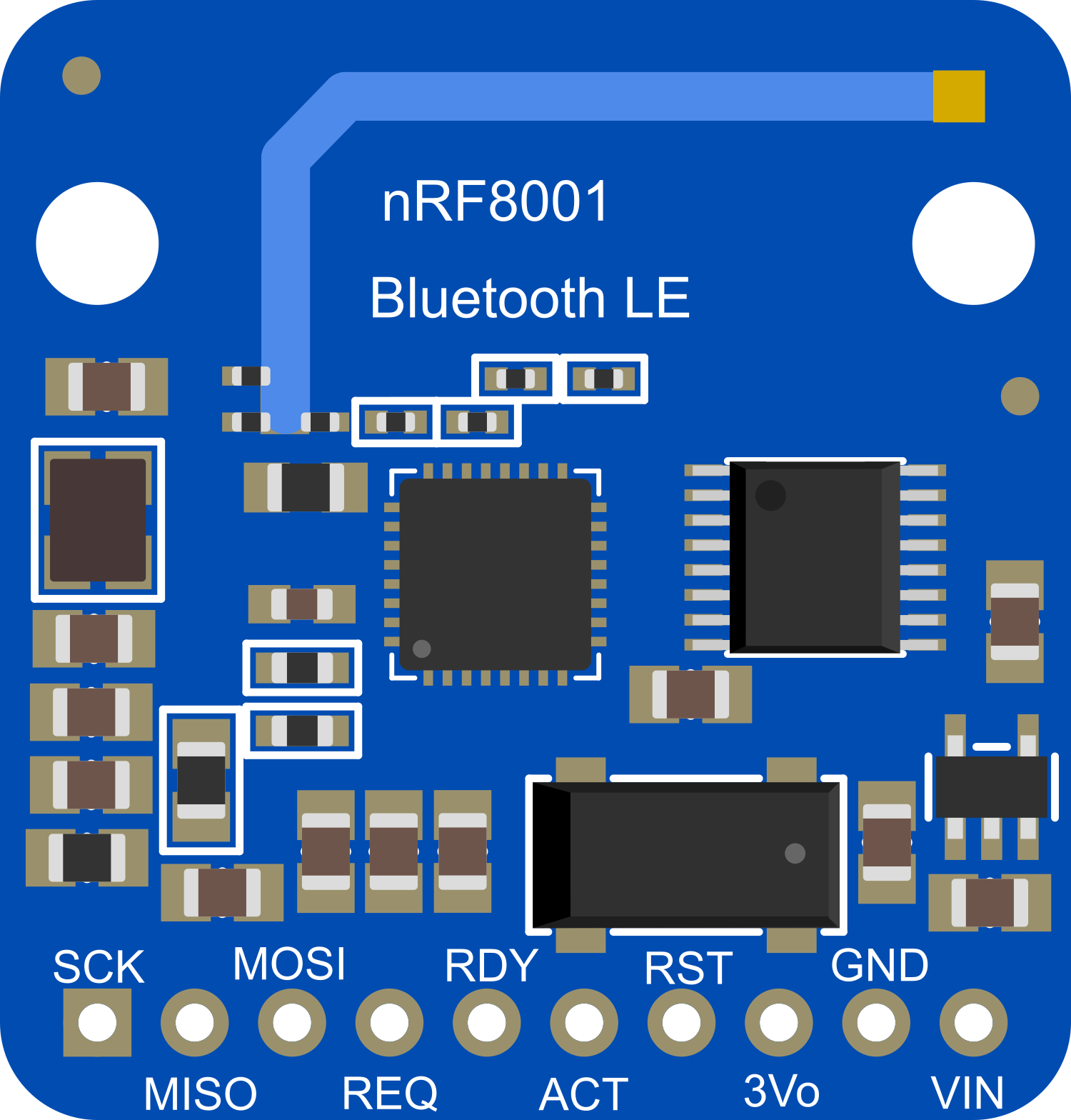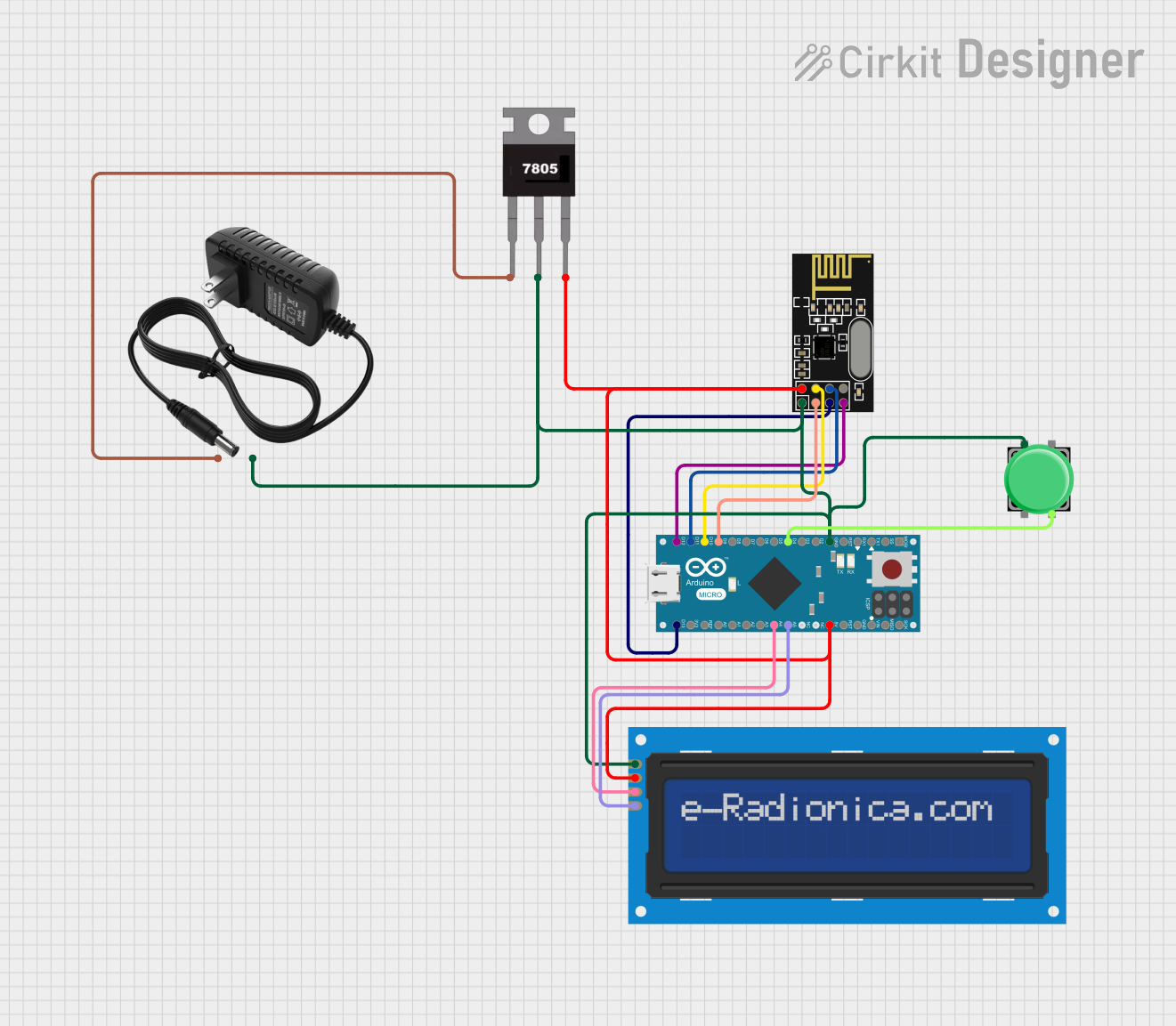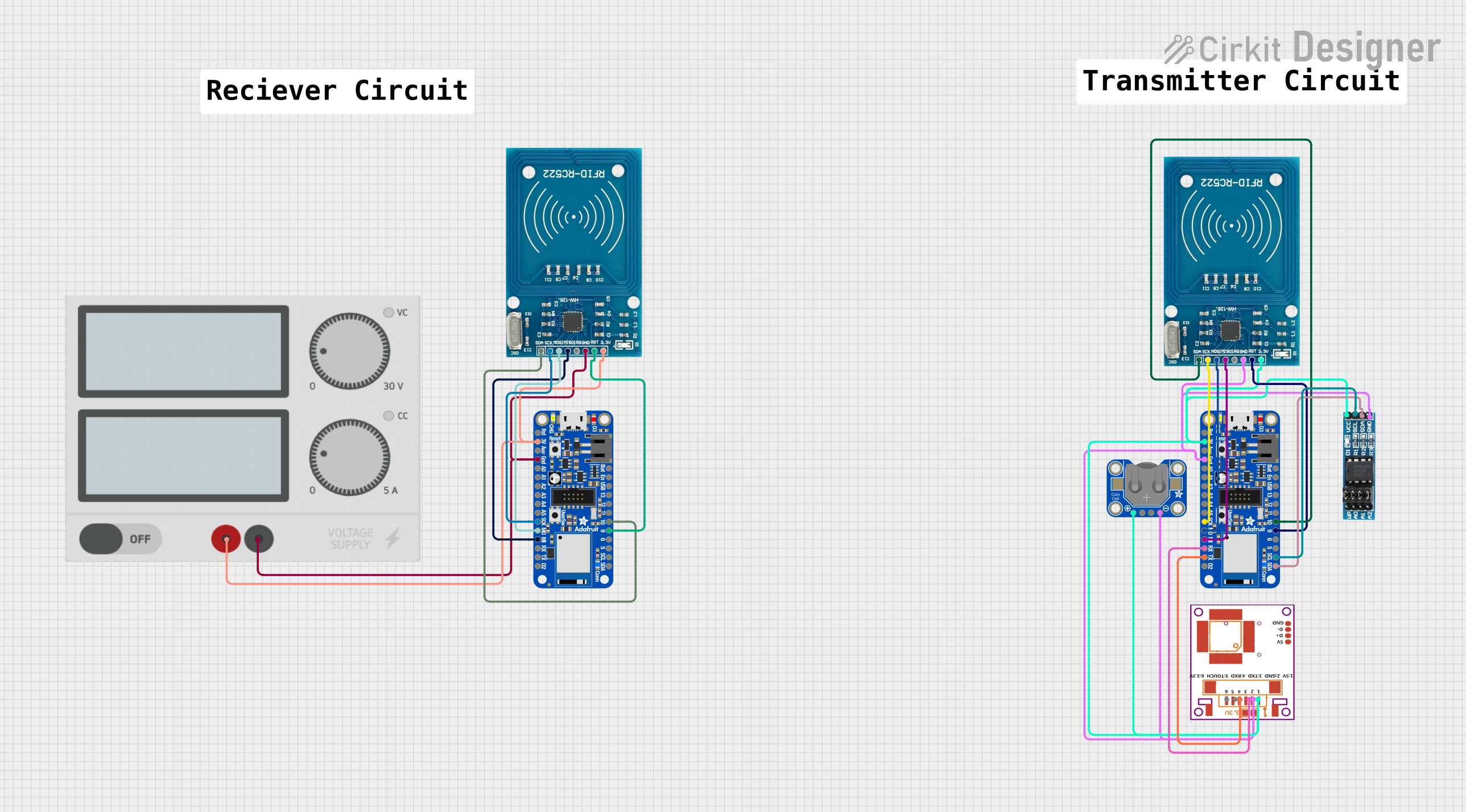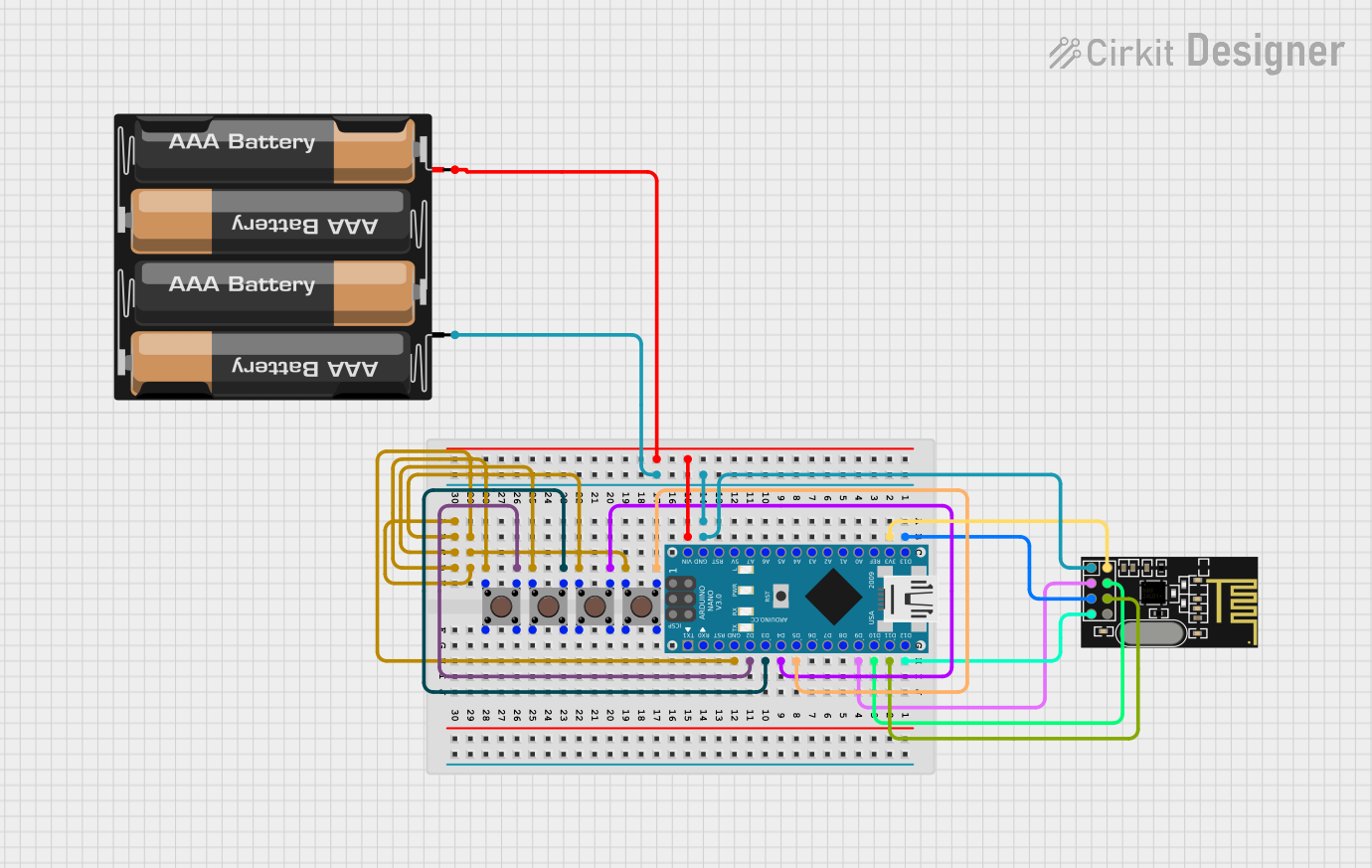
How to Use Adafruit nRF8001 Breakout: Examples, Pinouts, and Specs

 Design with Adafruit nRF8001 Breakout in Cirkit Designer
Design with Adafruit nRF8001 Breakout in Cirkit DesignerIntroduction
The Adafruit nRF8001 Breakout is a versatile and user-friendly Bluetooth Low Energy (BLE) module that enables wireless communication between microcontrollers and BLE-enabled devices such as smartphones and tablets. This breakout board is designed to make it easy to integrate BLE functionality into your projects without requiring extensive knowledge of Bluetooth technology.
Explore Projects Built with Adafruit nRF8001 Breakout

 Open Project in Cirkit Designer
Open Project in Cirkit Designer
 Open Project in Cirkit Designer
Open Project in Cirkit Designer
 Open Project in Cirkit Designer
Open Project in Cirkit Designer
 Open Project in Cirkit Designer
Open Project in Cirkit DesignerExplore Projects Built with Adafruit nRF8001 Breakout

 Open Project in Cirkit Designer
Open Project in Cirkit Designer
 Open Project in Cirkit Designer
Open Project in Cirkit Designer
 Open Project in Cirkit Designer
Open Project in Cirkit Designer
 Open Project in Cirkit Designer
Open Project in Cirkit DesignerCommon Applications and Use Cases
- Wearable devices
- Fitness gadgets
- Wireless sensor networks
- Home automation
- Mobile device accessories
Technical Specifications
Key Technical Details
- Supply Voltage (VCC): 3.3V
- I/O Logic Level: 3.3V (5V tolerant)
- Current Consumption: 12.5mA active, 3uA sleep mode
- Frequency: 2.4GHz ISM band
- Bluetooth Version: Bluetooth 4.0 Low Energy
- Range: Up to 60 feet (18 meters) in open space
Pin Configuration and Descriptions
| Pin Number | Name | Description |
|---|---|---|
| 1 | VIN | Supply voltage (3.3V - 12V DC) |
| 2 | GND | Ground |
| 3 | REQ | SPI Chip Select / Request |
| 4 | RDY | Ready pin, indicates data is available from nRF8001 |
| 5 | RST | Reset pin |
| 6 | SCK | SPI Clock |
| 7 | MOSI | SPI Master Out Slave In |
| 8 | MISO | SPI Master In Slave Out |
| 9 | ACT | Activity pin, indicates the radio is active |
Usage Instructions
How to Use the Component in a Circuit
- Powering the Module: Connect the VIN pin to a 3.3V supply, and the GND pin to the ground of your power supply.
- SPI Communication: Connect the SCK, MOSI, and MISO pins to the corresponding SPI pins on your microcontroller.
- Control Pins: Connect the REQ, RDY, and RST pins to available digital I/O pins on your microcontroller.
- Activity Monitoring (Optional): Connect the ACT pin to an I/O pin if you wish to monitor the radio activity.
Important Considerations and Best Practices
- Ensure that the power supply is clean and stable to prevent any damage to the module.
- Use pull-up resistors on the REQ, RDY, and RST pins if your microcontroller does not have built-in pull-ups.
- When using with a 5V microcontroller, ensure that the I/O pins are 5V tolerant or use level shifters.
- Keep the antenna area of the nRF8001 breakout clear of metal and other materials that may interfere with the signal.
Example Code for Arduino UNO
#include <SPI.h>
#include <Adafruit_BLE_UART.h>
// Connect REQ to pin 10, RDY to pin 2, RST to pin 9
Adafruit_BLE_UART BTLESerial = Adafruit_BLE_UART(10, 2, 9);
void setup() {
Serial.begin(9600);
BTLESerial.begin();
}
void loop() {
BTLESerial.pollACI();
// If there's data available from the BLE module
if (BTLESerial.available()) {
char c = BTLESerial.read();
Serial.print(c);
}
// If there's data available from the serial monitor
if (Serial.available()) {
char c = Serial.read();
BTLESerial.write(c);
}
}
Troubleshooting and FAQs
Common Issues
- LEDs on the breakout are not lighting up: Ensure that the power supply is connected correctly and is within the specified voltage range.
- No response from the module: Check that the SPI connections are correct and that the REQ, RDY, and RST pins are connected to the correct digital pins on your microcontroller.
- Unable to pair with a device: Make sure the module is in range of the device and that there are no obstructions or interference sources nearby.
Solutions and Tips for Troubleshooting
- Double-check all connections and ensure that solder joints are solid and not causing intermittent connections.
- Use the serial monitor to debug and check for any error messages or status codes from the nRF8001 module.
- Reset the module using the RST pin if it becomes unresponsive or behaves unexpectedly.
FAQs
Q: Can the nRF8001 Breakout be used with a 5V microcontroller? A: Yes, but ensure that the I/O pins are 5V tolerant or use level shifters to prevent damage to the module.
Q: What is the maximum range of the nRF8001 Breakout? A: The maximum range is approximately 60 feet (18 meters) in open space, but this can be reduced by obstacles and interference.
Q: Can I use the nRF8001 Breakout for streaming audio? A: No, the nRF8001 is designed for BLE and is not suitable for streaming audio. It is intended for low-bandwidth applications such as sensor data or control commands.